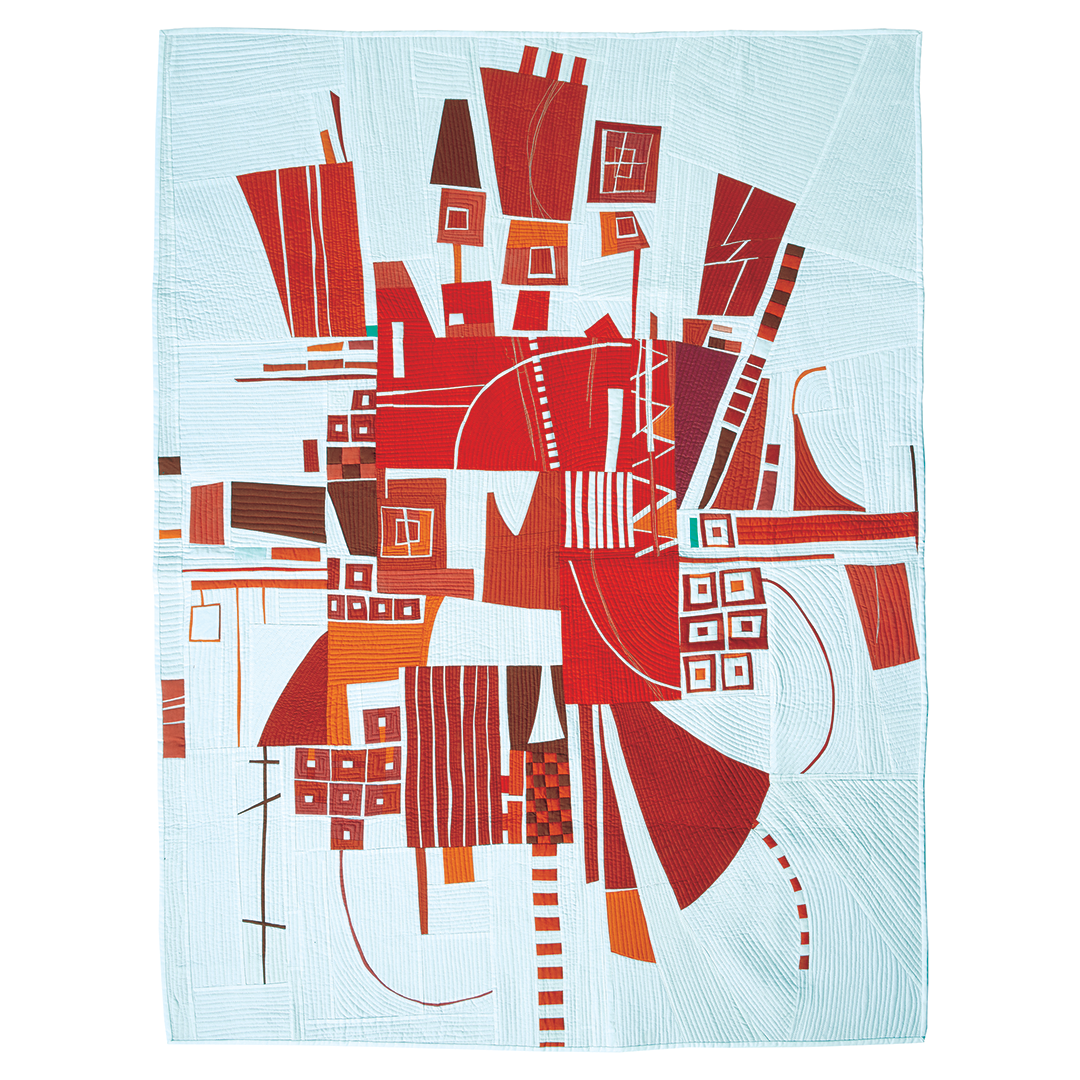As part of the Curated Quilts team, while on a recent visit to Washington D.C., I tracked down every possible quilt exhibited in our nation’s capital. From the Smithsonian to the Daughters of the American Revolution, D.C. is unmatched in its offerings of free museums and art collections to visit.
Nearly all the quilts currently on display were made during the period from the 1850s through to the 1920s. Despite being made over a century ago, I found that many of them exuded an air of modernity with hints of what would become the Modern Quilt Movement. Apparently, their quilters were breaking quilting rules before there was a Modern Quilt Movement to celebrate quilt-making rule breakers.
Untitled (Stars) 1900-1910
Unidentified artist
The maker may have been constrained with the materials she had, but the way she used black adds interest and gives the background a sense of movement. We especially like the pieced red and black strip at the top of the quilt.
Untitled (Stars) 1930s-40s
Unidentified artist
Many of the stars on this quilt were made from corduroy fabric.
‘Log Cabin’ Variant Table Cover, 1870-1885
by Laura Baldwin Clark (1834-1917)
Chevron Parlor Throw, 1870s
by Martha Jane Taylor (1828-1882)
Log Cabin Parlor Throw (1870-1890)
by Marian Frick (1829-1908)
Frick worked as a dressmaker. This quilt includes dress fabrics popular in the 1870s and 1880s, probably scraps from clothes she made for her clients and herself.
Crazy-Patchwork Parlor Throw (1890s)
by Unknown member of the Bates family of New Haven, Connecticut
Quilt, 1920
by Unidentified African-American artist(s)
This quilt was made mostly from wool scraps of worn clothing.
Machine-Quilted Applique Quilt, 1850s
by Mary DeLoach Sneed (1897-1905)
This quilt is very traditional in its aesthetic, but we were blown away when we saw that it was machine quilted back in the 1850s! Sewing machines did not become common household items until the 1860s and even then, they were usually owned by wealthy women. Family tradition states that Mary Sneed made this with one of the first sewing machines in Texas.
From the 1870s to the 1920s, silk thread and fabric manufacturing flourished in America. As a result, competition lowered silk prices of what had traditionally been very expensive fabric. This lowering of silk prices made it possible for women who couldn’t previously afford silk to make dresses and in turn, quilts from dress scraps.
When ‘Crazy Quilts’ were first being made, they were in response to contemporary popular culture and were incredibly innovative for their day. Most ‘Crazy Quilts’ were rarely quilted and were made as throws solely for display. Fabric substrates used included silks, velvets, satins, and sometimes tulles. The random piecing of the quilts is thought to imitate the crackling patterns of Japanese ceramics which were popular at the time. The lack of repeating motifs makes them some of the first improvisational quilts. Seams and patches were heavily embroidered. Many ‘Crazy Quilts’ reflected the personal interests of the maker.
Crazy Quilt 1875-1890
by Helen L. Dounce
Crazy Quilt, 1885
by Amelia Trowbridge (1858-1931)
Crazy-Patchwork Parlor Throw 1880-1900
by Unknown Maker
Commemorative Ribbon Parlor Throw, 1880-1895
by Unknown Maker
Unfinished Crazy-Patchwork Parlor Throw, 1877-1946
by Aimee Elkington Hodge (1865-1946)
Elkington embroidered her first patch for this quilt when she was twelve years old. Born in Ohio, she lived in Florida with her first husband and then move to Ohio with her second. Her crazy patchwork went with her throughout all her travels. In 1946, she stitched her 25 completed blocks together but died before she could add the border and finish the throw.
Every edition of Curated Quilts examines the history of the theme being focused on with an article by Theresa Duryea Wong. This article helps modern quilters understand more about the context from which modern quilting is often inspired.
When searching for inspiration for your next modern quilt, we encourage you to look for opportunities to be inspired by older, more traditional quilts, that can be found hanging in museums or in quilting books documenting the past. You can learn more about the history of quilts of its impact on the Modern Quilting Movement in each issue of Curated Quilts.
By Brittany Bowen Burton




